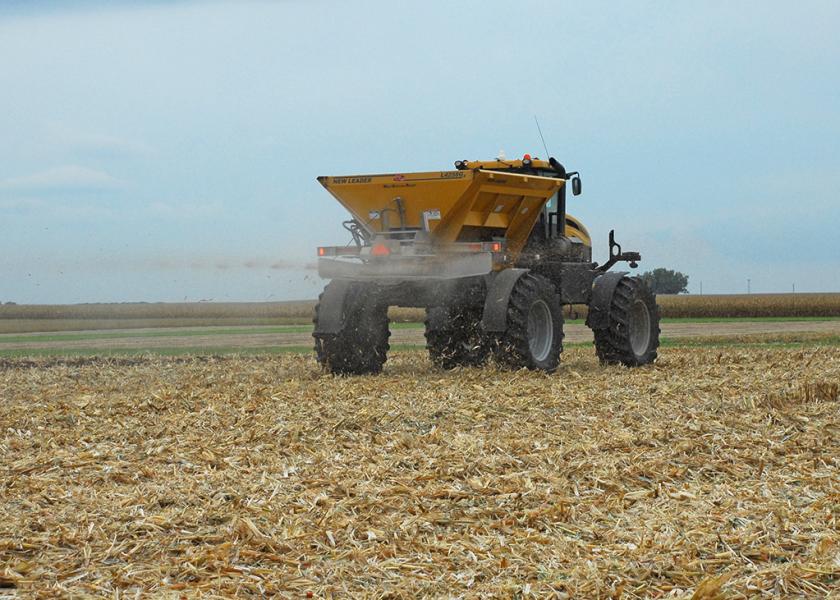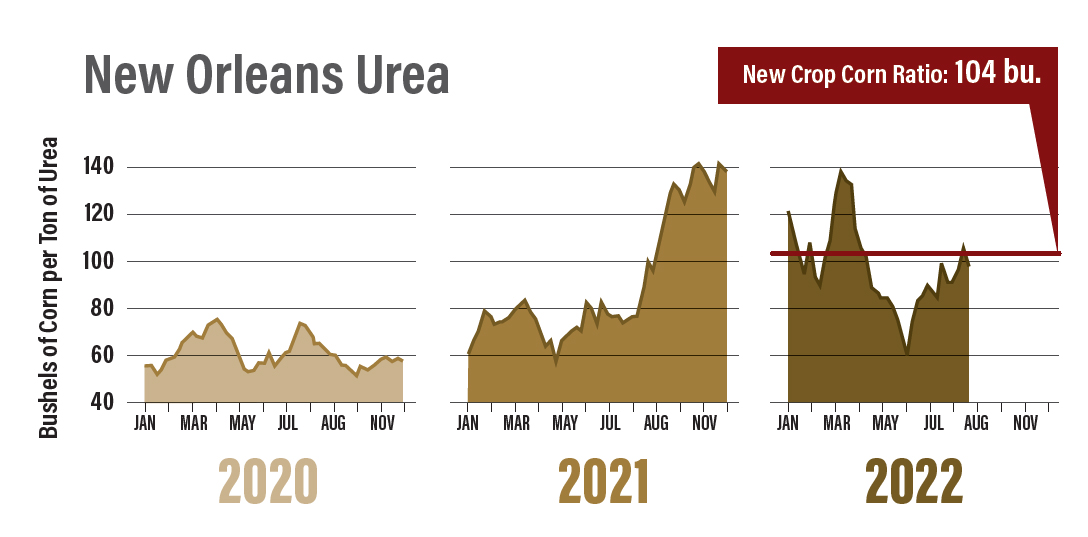3 Factors to Watch for Clues to the Future of Fertilizer Prices

Fertilizer is always a big line item for your production costs. For 2023, plan on it being an even bigger chunk.

Why are prices so high? “In the last 24 months we have seen a stupid number of black swans,” says Josh Linville, director of fertilizer for StoneX.
Even though the U.S. produces a large amount of nitrogen and phosphate fertilizers, we still import nearly 20% of our fertilizer needs, and the global market is shaky to say the least.
To understand how fertilizer prices could shift in the coming months, Linville and Jason Troendle, economist for The Fertilizer Institute, suggest watching these factors:
1. European Fertilizer Production
Due to record-high natural gas production, 50% to 70% of the ammonia production in the European Union (EU) ceased this summer. Natural gas accounts for 70% to 90% of ammonia production costs, and the EU produces around 9% of global nitrogen.
2. China Export Bans
In July, China extended its ban on fertilizer exports – both phosphate and nitrogen products. Historically the country has accounted for at least 25% of globally traded phosphate.
3. Russia-Ukraine Conflict
Even though Russia imposed restrictions on fertilizer exports due to the conflict, product is still being shipped to the global market. However, prices will stay elevated until the war ends, because ramping up fertilizer production can take three to five years.
PLAN FOR 2023
As you pencil out your plan for next season, Troendle says the first steps is to soil test to understand your nutrient needs. “Then you can determine how and where to use this high-cost input in the most efficient way,” he says.
Also, be in constant communication with your retailers and suppliers.
“Share your goals and needs,” Troendle says. “They’ll understand the local market and logistical issues facing your area, and together you can make the best decision.”
Sara Schafer uses her Missouri farm roots to cover crop management, business trends, farmland and more.







